
Correspondent Byron Richards contacted The Pirate Radio Hall of Fame. He wrote “As a teenager in the 60s, I was brought up on Radio Caroline (both
North and South). In the early seventies I met a guy at work who claimed he had been a radio engineer on Caroline. When I knew him he was an X-ray engineer for one of the medical equipment companies who supplied
X-ray equipment to hospitals. I was a radiographer at Park Hospital, Davyhulme (now called Trafford General) in Manchester. I think he worked for Siemens Medical Systems. Anyway he gave me a box of half-frame
slides taken on Caroline South which I still have today. Although not of great quality, there are some interesting pictures.” Byron has very kindly allowed us to publish some of them here. It looks as if
they were taken in late 1967 or early '68. Please note, these are Byron's property and should not be reproduced elsewhere without his specific permission.
|
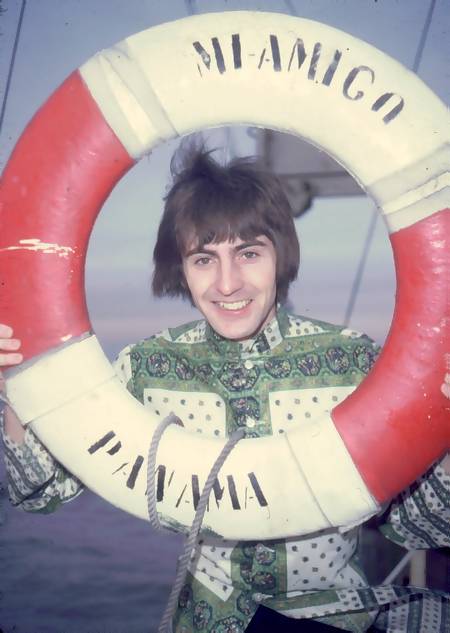
Roger Day. |
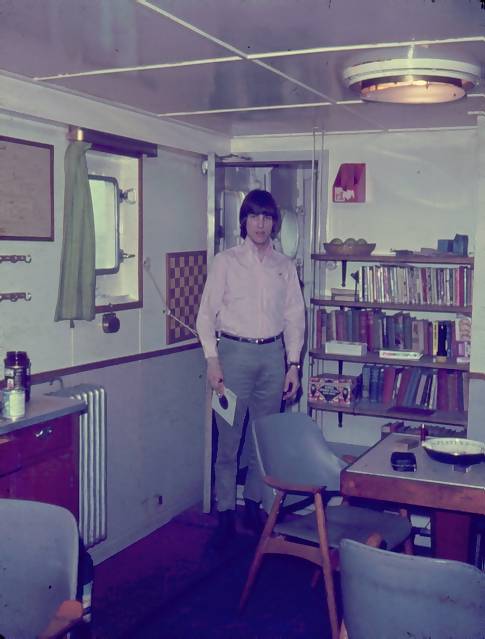
Johnnie Walker. |
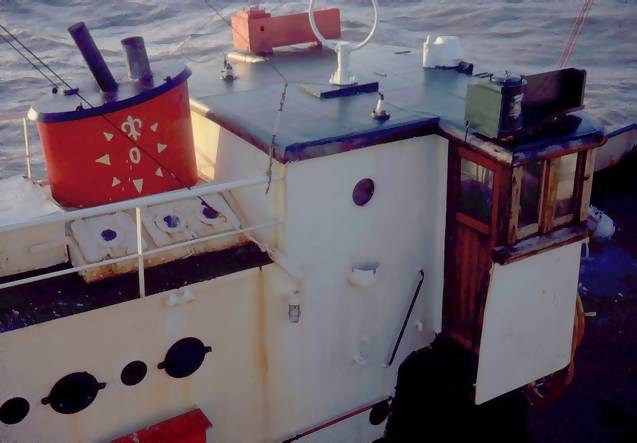
The tender alongside. |
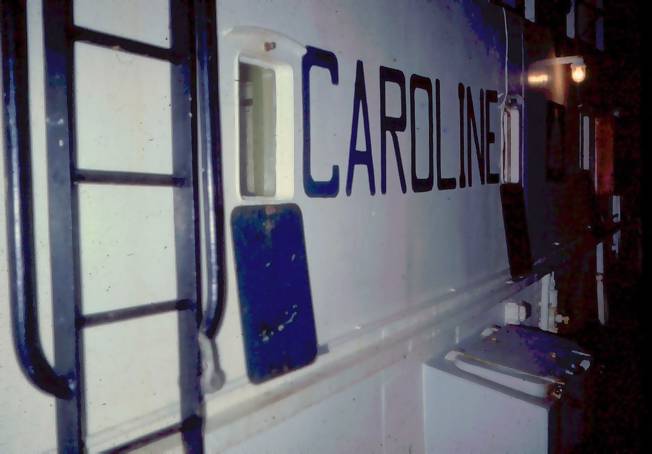
Side of the super-structure on the Mi Amigo. |
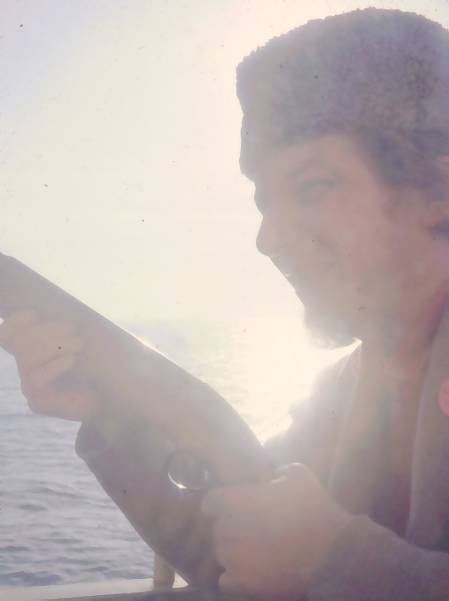
Robbie Dale with a rifle. |
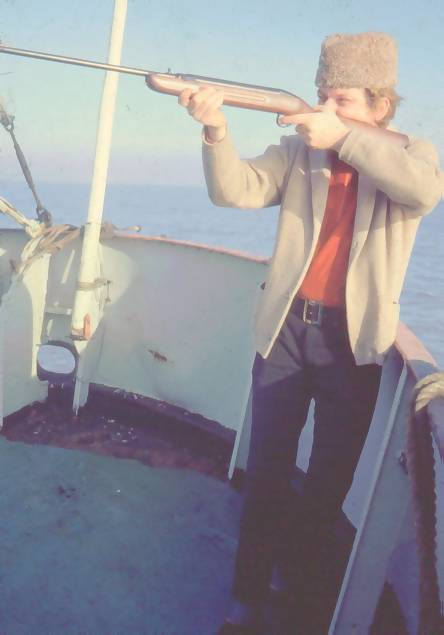
Sharp-shooter Robbie Dale. |
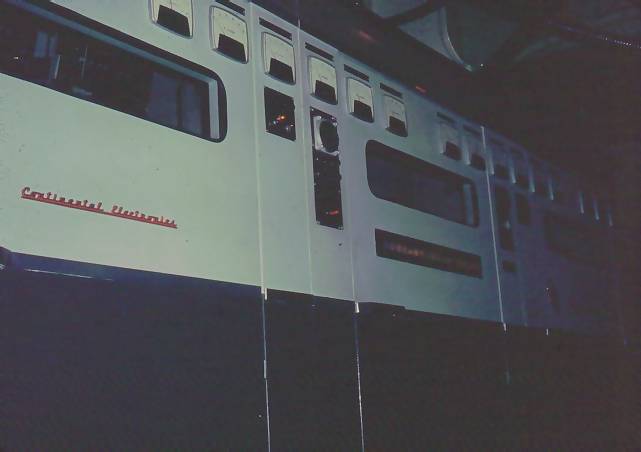
Caroline's transmitters, made by Continental Electronics. |

The tender. |
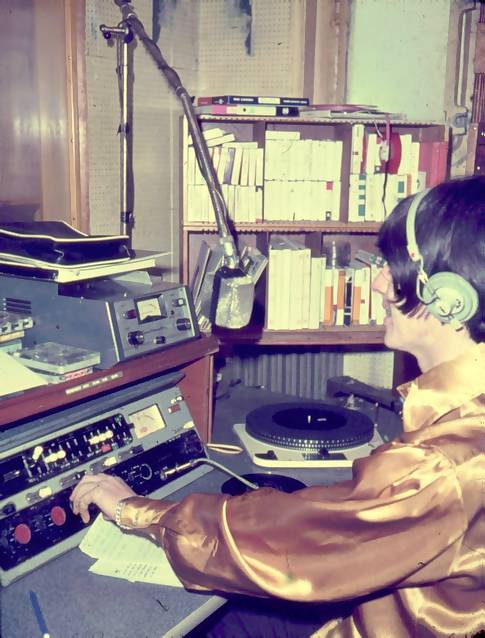
Stevi Merike. |

Stevi Merike. |

The bridge of the Mi Amigo. |
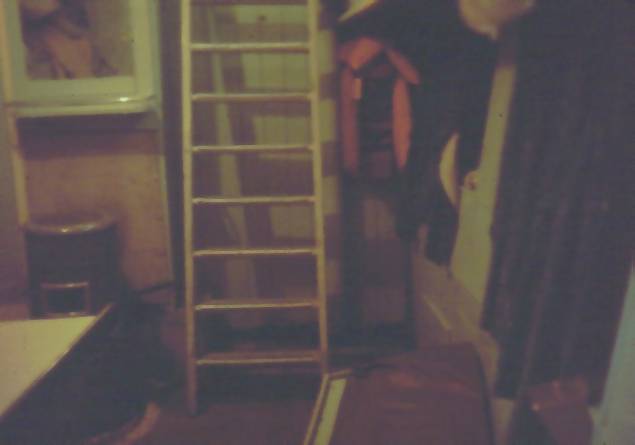
Bud Ballou writes: “This picture looks like the entrance to the ‘Bag O'Nails’, the name given to the cabin used by Carl Mitchell and someone else, which was located below the antenna. You had to go down a ladder to get into it.” |
MORRIS'S MI AMIGO MEMORIES - 1“In the picture of the Mi Amigo bridge (above), you will see, to the right, beneath the two clocks, the Decca Navigator. One evening, Ray Glennister and I were looking out from there, and Ray, talented fellow, observed that the ship had drifted within territorial waters. We dashed down to the mess where the Dutch crew were having their evening meal and told them the news. ‘F****** Englishmen! What the f*** do you f****** Englishmen know! F*** off!’ Just then, the Anglia TV newsreader announced that the coastguard had detected that the Radio Caroline ship had illegally entered British territorial waters. Immediately the room cleared, leaving a long table of half-finished meals. You've heard of the Marie Celeste, but in our case, we knew very well what had happened to the crew. The transmitter had to go off air so that the full power of the engines could be applied to driving the ship back to safety. It took about two hours for us to move three miles! The Captain of the ship declared that our anchor had been inadequate and radioed his company in Holland for a replacement. The replacement arrived next day, loosely chained to the forward deck of the supply tender, Offshore 1. It had swung backwards and forwards on its journey from IJmuiden and gouged great grooves in the deck. We asked the tender crew how they had found us a fresh anchor so quickly and they said that on the way out of port, they had just ‘picked one up’!” |